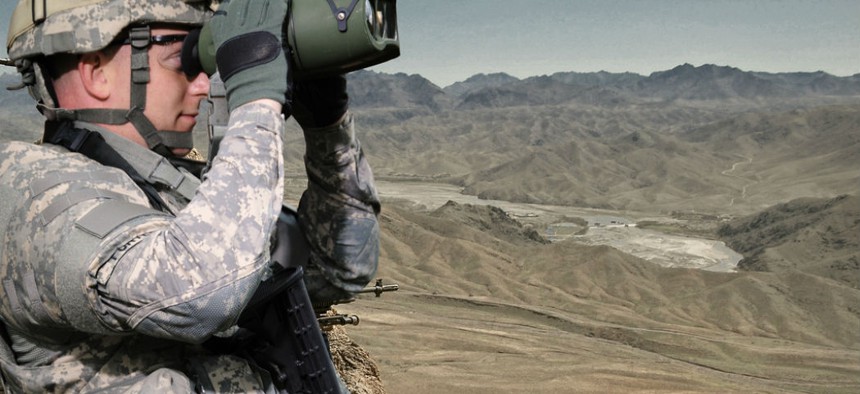SOCOM wants commandos to become walking SIGINT sensors
U.S. Special Operations Command is looking for a signals intelligence sensor to equip an individual commando with SIGINT-like ISR technology.
SOCOM has put out a request for information for a body-worn SIGINT collection device as a way to assess what high-tech gear can be provided by industry.
The base requirements are two-fold: a body-worn sensor with low size weight and power (SWaP) demands and a low-profile direction-finding sensor.
That's the easy part. What follows is some 87 different attributes that SOCOM would like in the sensors, some of which would seem particularly useful for commandos operating behind enemy lines who are in danger of capture. For example, "the system shall have the ability to be sanitized upon command," SOCOM asks.
It should also "shall have the ability to be zeroized [reset to zero] upon command." Those commands might be sent remotely, suggesting that the users may not find themselves in a position to destroy their own equipment. However, the sensor should also have a fail-safe feature to prevent accidentally wiping the system.
In terms of signals collection, the sensor should be capable of monitoring a frequency range of 3 to 6,000 MHz. It should also be capable of scanning special frequency bands as well as focus on special Signals of Interest. Also needed are narrowband and wideband automatic signals detection.
Network connectivity is desired, including the ability to update common operating pictures used by battle command systems. But to avoid detection, the sensor should transmit over Low Probability of Interception (LPI) and Low Probability of Detection (LPD) waveforms.
The sensor should weigh no more than 12 pounds, including batteries but not including the antennae and ancillary cabling (the goal is to reduce that figure to 3 to 9 pounds). Battery life will be at least eight hours, eventually expanding to 12 hours. Data storage should be a minimum of 100 gigabytes to start, and eventually 500 gigabytes.
The SIGINT sensor will also feature a sophisticated display and interface. Signals should generate a visual or audio alert within five seconds of intercept. "Equipment shall not disrupt operator user of night vision goggles when not viewing system display," notes SOCOM.
SOCOM wants not just signals collection, but analysis as well. The sensor should give "the user the option to process audio in near real-time for language identification, speaker identification, gender identification, speech detection and group identification. Also audio should be available via post mission analysis using audio processing software."
The software should meet U.S. intelligence community security standards, including "ICD [intelligence community directive] 503 protection level 3, Integrity Level Of Concern (ILOC) medium, Availability Level of Concern (ALOC) medium or equivalent Office of the Director of National intelligence (ODNI) directives/publications."





